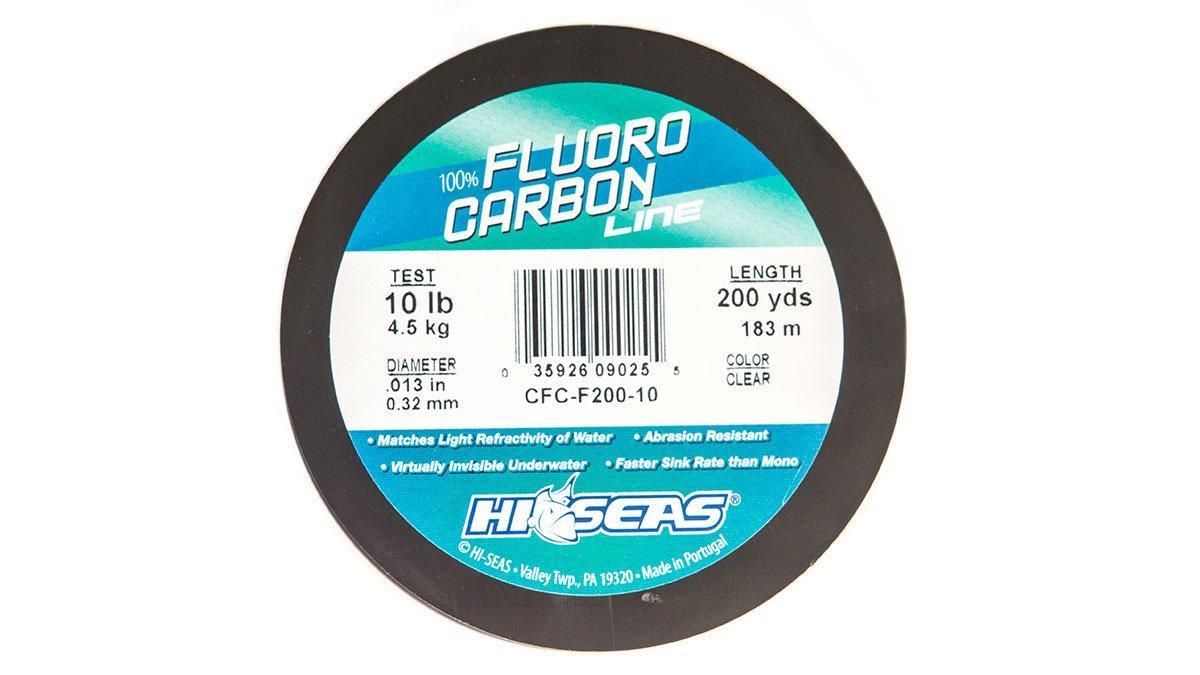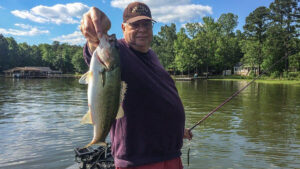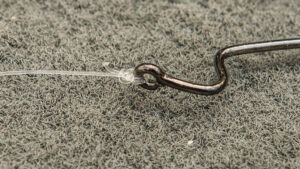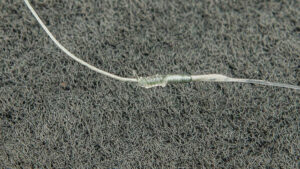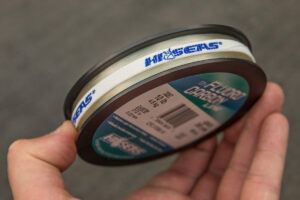I’ve grown to be very particular when it comes to choosing fishing line. Not only is it the one thing that separates you from a potential trophy bass, but it quality fishing line also contributes heavily to the overall health of a fishery. Whenever your line breaks while fighting a fish, the chances of that fishing dying due to hook or soft plastic ingestion skyrockets.
As I’m sure many of you have heard, the last two Bassmaster Classics were won by anglers using HI-SEAS fishing line. This definitely got my attention, so I wanted to spend several weeks testing it for myself. Essentially, I felt it was necessary to see if this recent winning streak was due to sheer coincidence or if there was really something to it.
READ MORE FISHING LINE REVIEWS HERE
After six weeks of testing HI-SEAS 100% Fluorocarbon, I’m thoroughly impressed by several characteristics of this fishing line. I’ve put it in the hands of novice guide clients and have used it myself for several fishing trips and I’ve learned a lot about its qualities.
If you’re interested in trying it out for yourself, I believe there are a few things you should know.
- Excellent abrasion resistance
- Impressive knot strength
- Larger diameter than many fluorocarbons
Stands up to abuse nicely
I fish heavy cover whenever the opportunity arises—there’s something about a gnarly laydown or a nasty, tangled grass bed that draws me in like a magnet. But when I first started studying this fishing style years ago, I quickly learned that without the proper fishing line, you’re toast. There’s no other way to say it.
The bass in my area lately have been guarding fry in some hard-to-reach areas, so I’ve felt right at home. They’ve been tucked underneath docks, inside grass lines and at the ends of fallen trees and the only thing I’ve been able to consistenly get bit on has been a weightless wacky-rigged stick worm. So my setup of choice has been a spinning setup with 20-pound braided main line and a 7-foot, 10-pound HI-SEAS 100% Fluorocarbon leader.
I can confidently say that the HI-SEAS 100% Fluorocarbon has held up beautifully in some of the most inhospitable places you could possibly think of putting a bait, or fishing line for that matter. My guide clients have made some pretty wild and crazy casts lately—we all do it—and I’ve been extremely impressed by this line’s abrasion resistance.
I’ve seen this line get dragged over the shingles of boat houses, the full length of splinter-covered dock walkways, around dock posts and over obstacle courses of tree limbs and I’ll be totally honest—I’m only retying about 2 leaders per weekend. I wasn’t expecting such resilience from 10-pound line, but you won’t find me complaining.
I’ve made a concerted effort to check the integrity of the leader after each and every “uh-oh” cast by running my fingers down the length of the fluorocarbon. Very rarely have I felt any bad spots. As with any fishing line I’ve used, the only exception to this rule has been rocks. And if anyone invents a rock-resistant fishing line, I want to know about it.
I’ve witnessed and been part of roughly 200 fish catches with this particular line thus far and we’ve had one fish break the leader. More specifically, a 4-pounder thumped my wacky rig underneath a dock and before I had a chance to set the hook, she was wrapped up like a pretzel around just about every piece of wood down there.
In baseball terms, my clients and I are batting .995 with 10-pound fluorocarbon in thick cover. I’ll take that all day long.
Impressive fishing knot strength
I’ll start this section by admitting that I’m not a “knot junkie” by any means. I use the knots that work best for me and don’t stray far from them. With that being said, I’ve been connecting my 10-pound HI-SEAS 100% Fluorocarbon to the braided main line with a Two Uni Join Knot and tying my hooks with a simple Palomar Knot.
So far, so good. I’ve used many small-diameter fluorocarbons in the past that will actually break when cinching the Two Uni Join Knot—those lines go into the trash, quite honestly. When tying knots with the HI-SEAS, however, I’m able to pull the knot as tightly as possible without any breaking or burning.
In regards to the knot strength when tying a Palomar, this line has performed excellently. It cinches down very smoothly and shows no signs of burning against itself. I’ve caught bass up to 5 pounds so far with this knot and it has withstood multiple boat-side surges without any problems.
Larger diameter than some other fluorocarbons
I’ve also made sure to use this line as main line while fishing. It manages well on the spool, but you’ll notice that it’s a bit thicker than some other fluorocarbon lines. It doesn’t kink too badly, but I did, in fact, feel a difference while fishing.
Essentially, the 10-pound test felt more like 12-pound test and the 15-pound test felt very similar to 17-pound test. But with the knot strength and abrasion resistance it has demonstrated throughout my testing, I have a hard time complaining about it. It is, however, something worth considering when deciding on which pound-test to purchase.
When using HI-SEAS 100% Fluorocarbon as leader material, I’ve actually liked the fact that it’s a bit bigger. It “holds” onto the braid quite well and hasn’t seemed to make a bit of difference in regards to line visibility. I’ve been purposely targeting very clear water lately and I’m noticing very few short strikes. Each fish seems to attack the bait aggressively without paying any attention to the line.
Final impressions
Line preference really seems to vary from one angler to another. Some actually prefer a thicker fluorocarbon, while others use the thinnest stuff they can find. Personally speaking, I believe this to be one of the better fluorocarbon leader materials I’ve used in the past year. When I set the hook on a bass, I have total confidence that I’ll get ‘em into the boat without line failure. I’m going to continue to use it and when it runs out, I’ll most likely buy a few more spools.
HI-SEAS 100% Fluorocarbon is available at TackleWarehouse.com.


